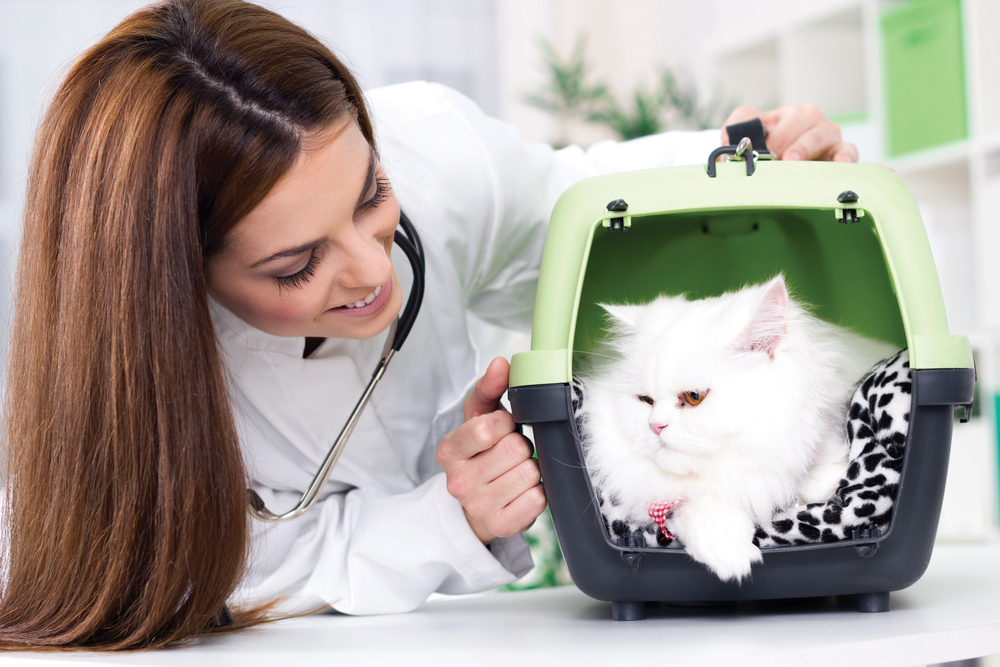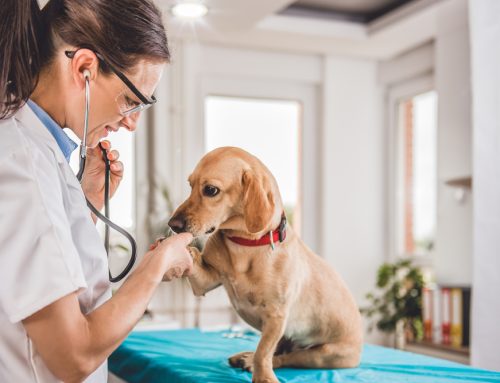It’s no secret that many pets have a negative association with the veterinarian. For some, the negative experience starts with the car ride or the pet carrier. For others, fear sets in when they are taken from their owner for a procedure in the treatment area. No matter the source of your pet’s anxiety, at American Canyon Animal Hospital, we believe every pet deserves to be “Fear Free.” That’s why our veterinarian and lead veterinary assistant became certified with the Fear Free program, a concept that promotes stress reduction in pets for a calmer, peaceful visit. By using less invasive techniques, both in the hospital and at home, veterinary professionals and pet owners can work together to achieve a common goal—less anxious pets, and less stressful veterinary visits. Here’s what being Fear Free means:
Fear Free means understanding signs of fear, anxiety, and stress in pets
Unlike people, pets cannot verbalize when they feel anxious or fearful. Therefore, recognizing the subtle signs that they are experiencing discomfort is our job. Dogs may manifest these feelings as cowering, looking away, tucking the tail between the legs, drooling, or panting. Fearful cats will often attempt to hide or crouch down, or pin their ears back. Exceptionally fearful pets will show obvious signs, such as growling, hissing, or sometimes lunging.
Fear Free means removing triggers that promote anxiety
Once we understand fear and anxiety signs in our pets, we can connect these behaviors to the causative triggers. For some pets, something as simple as bringing out the pet carrier may set them off into an anxious cascade. Other pets are calm and content for the trip to the veterinarian, but quickly develop “white coat syndrome” when the veterinarian enters the room. Still others may be triggered by certain smells, noises, or other pets in the waiting area. For many, a combination of these factors creates the perfect storm of fear and anxiety, culminating in an intensely stressful experience.
Since many of these triggers are consistent across the board, Fear Free practitioners aim to address common sources of stress in their practice, to promote calm and tranquility. This is often achieved through creating separate dog and cat areas, minimizing waiting area crowds, and offering treats throughout the visit. Another Fear Free concept mainstay includes using limited restraint during procedures. You may also notice soothing paint colors or gentle music during your visit.
Fear Free means pet owners play a role in reducing pet stress
Addressing veterinary-related fear and stress actually starts long before you enter the hospital. Preparing your pet for their visit will require time, patience, and a little dedication on your part. If your pet uses a carrier, harness, or vehicle for transport, acclimate them to these devices several days before your appointment. Place any items you will use in the middle of the room, so your pet can freely explore. Put treats inside, or spray a pheromone product in and around the device, to encourage a positive association. Finally, take your pet for short car trips occasionally, so they don’t affiliate your vehicle only with trips to the veterinarian.
Fear Free means increased safety for veterinary staff
By implementing calming tactics in the clinic, pets are less likely to react with fear-based aggression, like biting or scratching. Many veterinary staff members are injured during assertive restraint techniques, like scruffing or pinning in attempts to draw blood, take X-rays, or perform other procedures. Fortunately, such techniques are losing favor to the more effective Fear Free approach. When pets don’t cooperate—and not all of them will—we opt for sedation and analgesia to reduce stress, rather than increasing restraint. This allows our patients (i.e., your pets) to remain calm, and keeps our staff safe. We will make every attempt to use calming techniques on your pet, before discussing sedation.
Fear Free means better quality medicine

By implementing Fear Free strategies, we can practice higher quality veterinary medicine. Since fear and anxiety can elevate your pet’s heart rate, blood pressure, and blood glucose, practicing these strategies makes sense from a medical perspective, too. Additionally, one can argue that Fear Free techniques may reduce stress levels in veterinary staff as well, allowing for clearer thinking and more effective problem-solving.
At American Canyon Veterinary Hospital, we take your pet’s fear and anxiety extremely seriously. Not only is our veterinary team becoming Fear Free certified, but also we are working on becoming an entirely Fear Free practice in the coming months. Together, we can achieve the ultimate goal of a calmer, more peaceful veterinary experience for you and your pet. For questions, concerns, or more information, contact us.









Leave A Comment